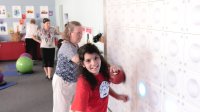Sensory Room 101
After we published a video about a special room designed to help autistic kids calm and focus themselves, you had questions. Here’s what it takes to create this kind of space.
Your content has been saved!
Go to My Saved Content.A sensory room—a therapeutic space with a variety of equipment that provides students with special needs with personalized sensory input—helps these children calm and focus themselves so they can be better prepared for learning and interacting with others. In April, Edutopia published the story of Meriden Public Schools in Connecticut, including a video about the district’s sensory room at Hanover Elementary School, which provides support services for students with a wide range of special needs.
What Are the Benefits of a Sensory Room?
Improved services: Meriden Public Schools students with special needs were previously sent outside the district to receive services. According to Patricia Sullivan-Kowalski, Meriden’s director of pupil personnel, this resulted in students feeling less connected to their community. By creating their own sensory room, administrators gained the ability to keep students in their community and provide them with a safe place in a least restrictive environment.
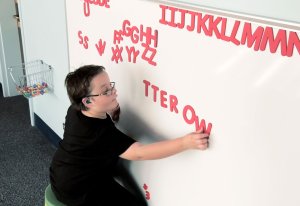
Improved student outcomes: Sullivan-Kowalski says the sensory room at Hanover has had a positive impact on students, who “are better able to follow directions and spend more time on task,” she says. “With that, we see a decrease in negative behaviors. The students are very motivated. They want to go to the sensory room.”
Cost savings: Setting up a sensory room costs less than sending students out for support services. To pay for Hanover’s sensory room, Mark Benigni, the Meriden district superintendent, reallocated support services funds, covering the room and its equipment, staff, and professional development.
How Is the Sensory Room Used? What Student Objectives Does It Meet?
The Hanover sensory room was designed primarily for autistic students, but over time it has expanded to support all students, including those with vision difficulties, language difficulties, learning disabilities, emotional disturbances, all kindergartners, and any student who needs a safe, quiet room to calm their body. “We often find that practices designed to meet the needs of the most challenging students in a school are effective for all kids,” says Peter Poutiatine, Edutopia’s school selection coordinator, who researches successful school practices.
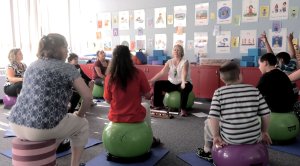
When creating the sensory room, Meriden educators focused on incorporating proprioception, the awareness of where your body is in space, and the vestibular system, the sense of balance. Students with challenges in proprioception appear clumsy—they’re not able to get in line without being right on top of the next student, for example. The educators give these students a lot of so-called heavy work, like bouncing and jumping, to help develop this sense. Students with vestibular challenges have trouble balancing, so they use a platform swing that helps improve this sense. Having students work on their proprioceptive and vestibular systems helps them become aware of how their bodies move and how they can control their movements.
A sensory room can be used to meet multiple objectives, depending on each student’s needs. The Hanover room in the video above has a variety of stations that were designed primarily to help students with proprioceptive and vestibular issues be better able to self-regulate. The room measures about 1,200 square feet—it was previously a kindergarten.
Working with an occupational therapist and a physical therapist, special needs students attend the sensory room for a half hour a day. Meriden educators adjust the following program to meet individual students’ needs:
- Bouncing ball: Students always start by bouncing on a ball in time to a metronome. It’s very important to provide consistency, and starting (and ending) each session on a bouncing ball allows for ease of transition and provides predictability. Next, students either do a set rotation among the stations or make their own choices.
- Circuit rotation or chosen activities: After the ball, a student may do a set rotation, visiting several stations for three to five minutes. This provides a great deal of sensory input and exposes students to the different areas of the room. Or a student may choose a desired activity and stay there for a directed amount of time. It’s very important that students have enough time in a chosen station to feel the desired effect.
- Yoga: The occupational and physical therapists have posted images of yoga poses on the walls in the Hanover sensory room, and make themselves available to help as needed.
- Bouncing ball: Students end each session by bouncing on a ball.
Who Designed the Room?
Meriden Public Schools’ head of occupational therapy, Kathleen Fritz Romania, and lead physical therapist, Heather McDonnell, designed the room. They worked with others, including the district’s lead behavior analyst, the speech and language pathologist, and the special ed teacher, to ensure that the programming supported specific goals concerning behavior, communication, and academic skills.
What Do You Need to Get Started With a Sensory Room?
The team at Meriden agrees that you don’t have to spend a lot of money to get started. “If you put down carpet, paint the walls a calming color, and put light fabric over the lights, your students will feel a change right away when they walk into the room,” says McDonnell, the physical therapist.
You can also use equipment that doesn’t cost a lot: Therapy balls, battle ropes, and scooter boards are very inexpensive and have numerous applications with students. You can also make your own sensory bins—plastic dishwashing containers filled with rice and dried beans will work.
What Equipment Does the Sensory Room Have?
The sensory room at Hanover Elementary has equipment that’s designed to give students a variety of sensory inputs. For example:
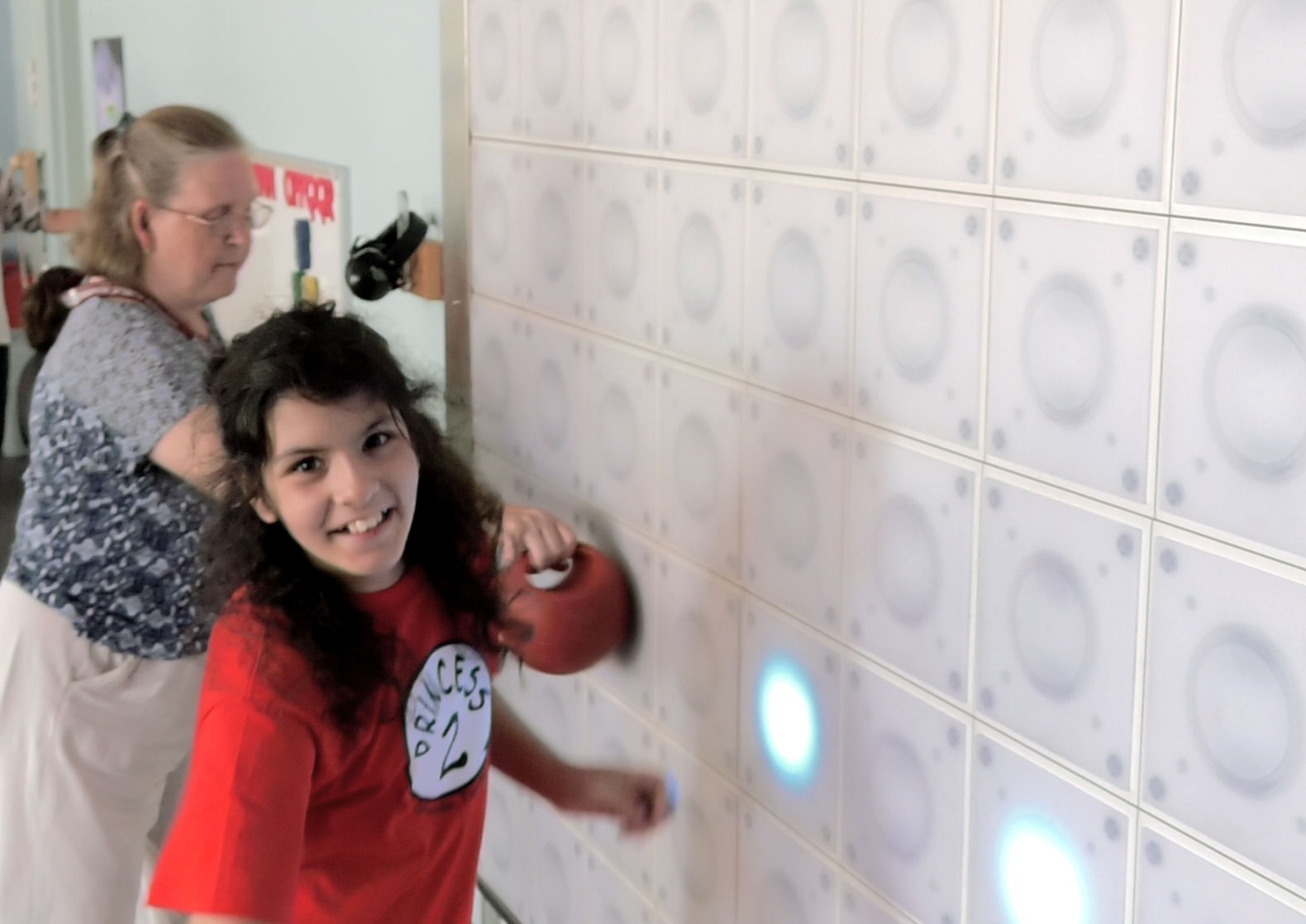

When Do Students Use the Sensory Room?
At Hanover, there are five classes of eight or nine students with autism. Each of these classes comes to the sensory room for half an hour a day. Specialists can also schedule time with the physical and/or occupational therapists for one hour a week. The physical therapist and occupational therapist collaborate with each specialist to provide programming, music, and lesson plans.
Does the Sensory Room Benefit Kids Who Have Lived Through Trauma?
Meriden has three sensory rooms in all, and each is designed to meet different student needs. When working with students who have experienced trauma, it’s important to have input from a team—typically including the school psychologist or a social worker who is trained in trauma-based services—as to what is appropriate and what is not.
Who Manages the Sensory Room?
Trained staff members take care of each of the three sensory rooms. Meriden Public Schools’ head of occupational therapy, Kathleen Fritz Romania, and lead physical therapist, Heather McDonnell, train these staffers.
Best Practices and Things to Avoid
Make sure your facilities team is on board. “They were able to help us with construction early in the process and give us information about what we could and could not move,” says Romania. “It made the logistics of the actual physical space go much more smoothly.”
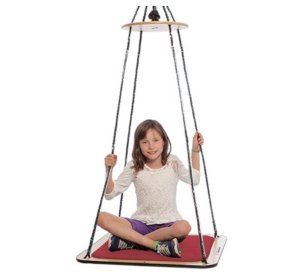
Develop a program and protocol for how staff should use and maintain the room—and make sure your staff is trained. “Everyone needs to understand the purpose of the room, what each piece in there is for, and how to put it away after use. Students also need to follow a routine, so that they don’t come in and act like they’re at Disneyland, bop all around, and then leave it in total devastation,” says Romania.
Reinforce the right behavior. Especially with students on a behavior plan, you should work closely with the school team and the behavioral specialist to make sure kids get the right message from their time in the sensory room. Sullivan-Kowalski, the director of pupil personnel, cautions that children should not be sent to the sensory room for acting out, “because you’ve just reinforced, ‘Act out in your classroom, you’ll come out and do this.’ The sensory room needs to be a part of a behavioral plan as either a reward or a break.”
Locate your sensory room in a central location within your building if possible. At Hanover, the sensory room is directly across from the school office, which makes it easy to keep tabs on the room and to ensure that the staff is using it correctly and that equipment is being maintained properly. In the other two schools in the district with sensory rooms, those rooms are located in the farthest corner from the office, making them more difficult to monitor.
